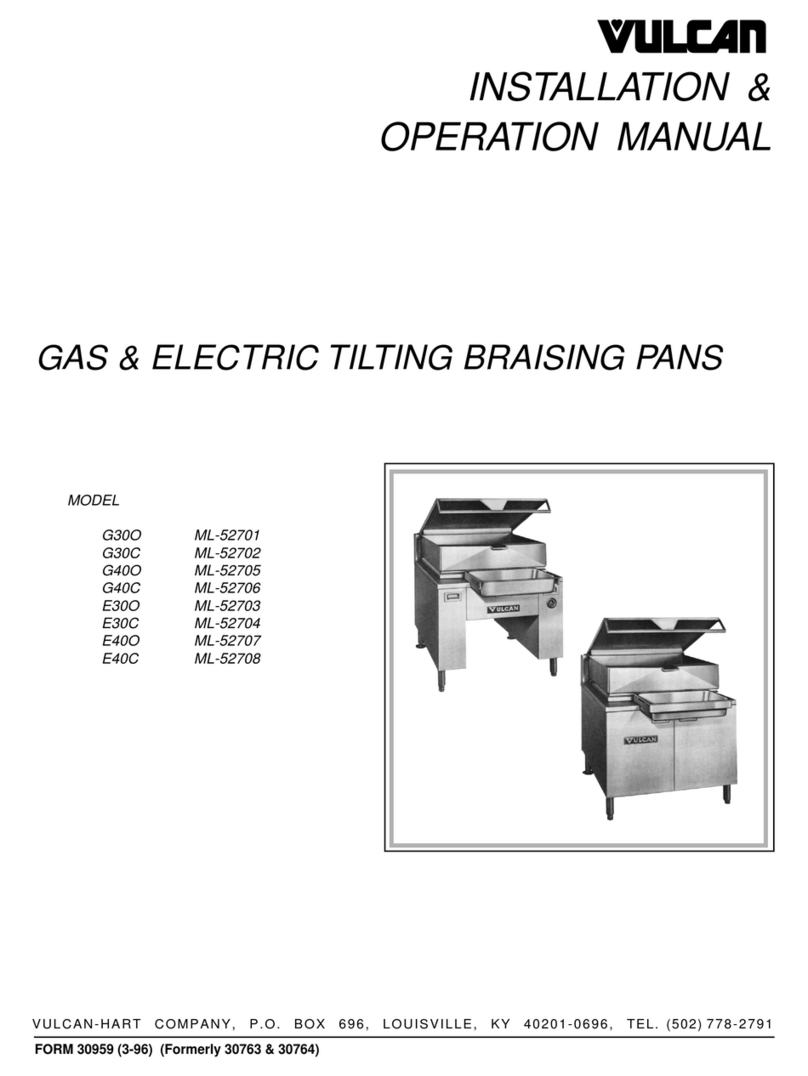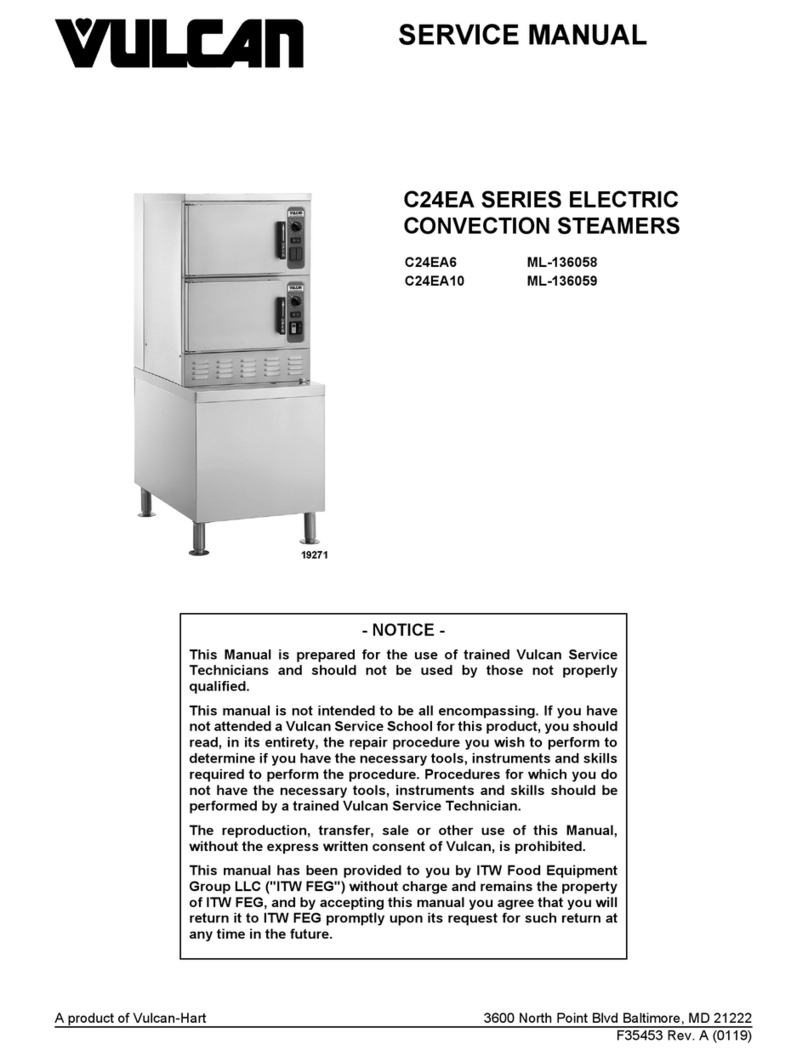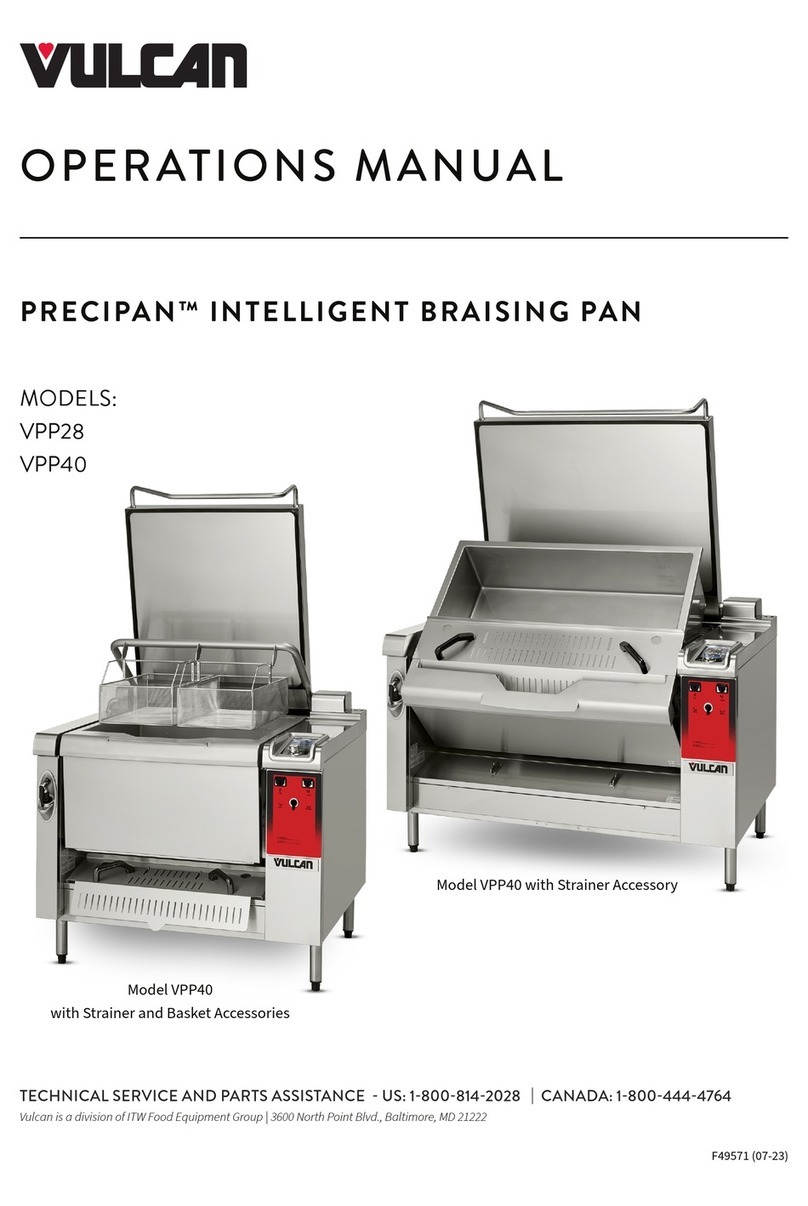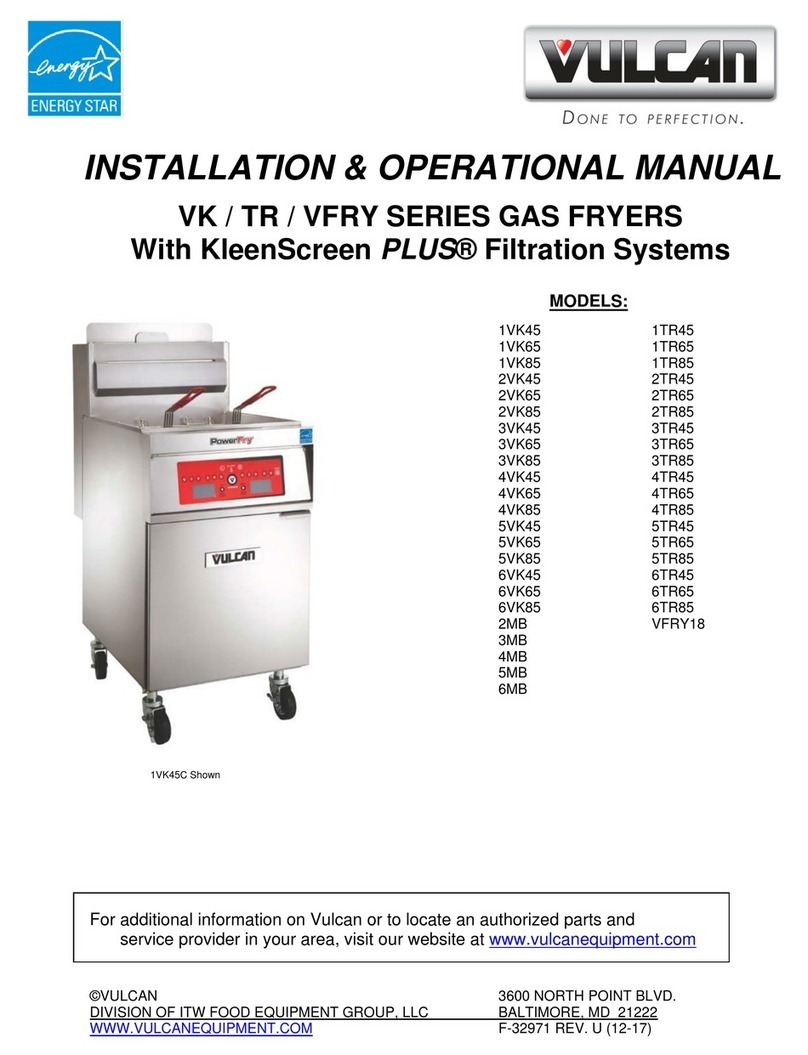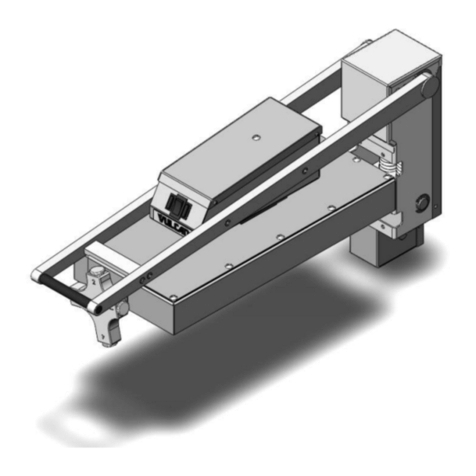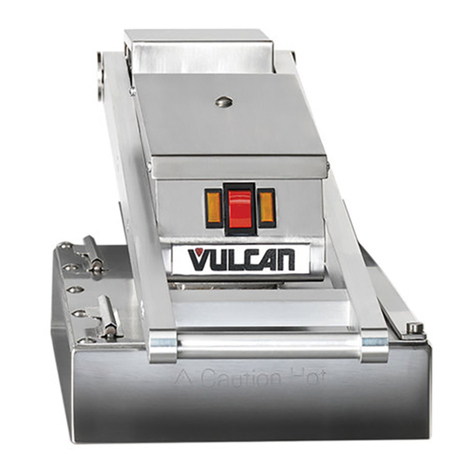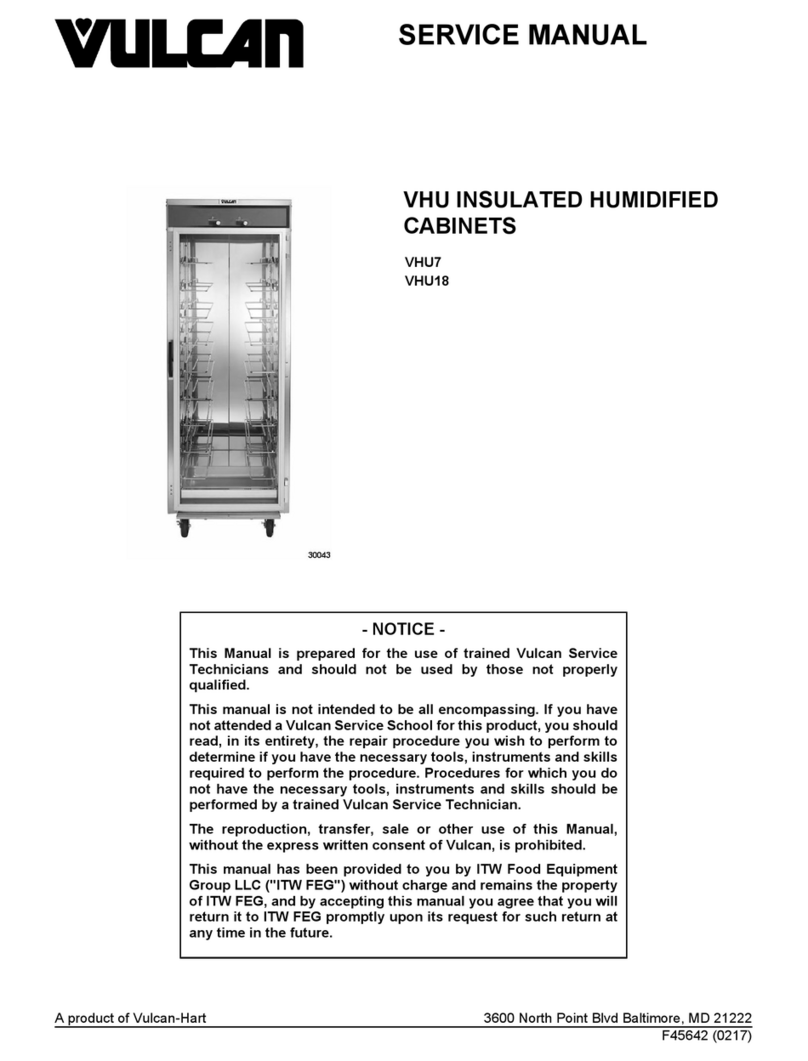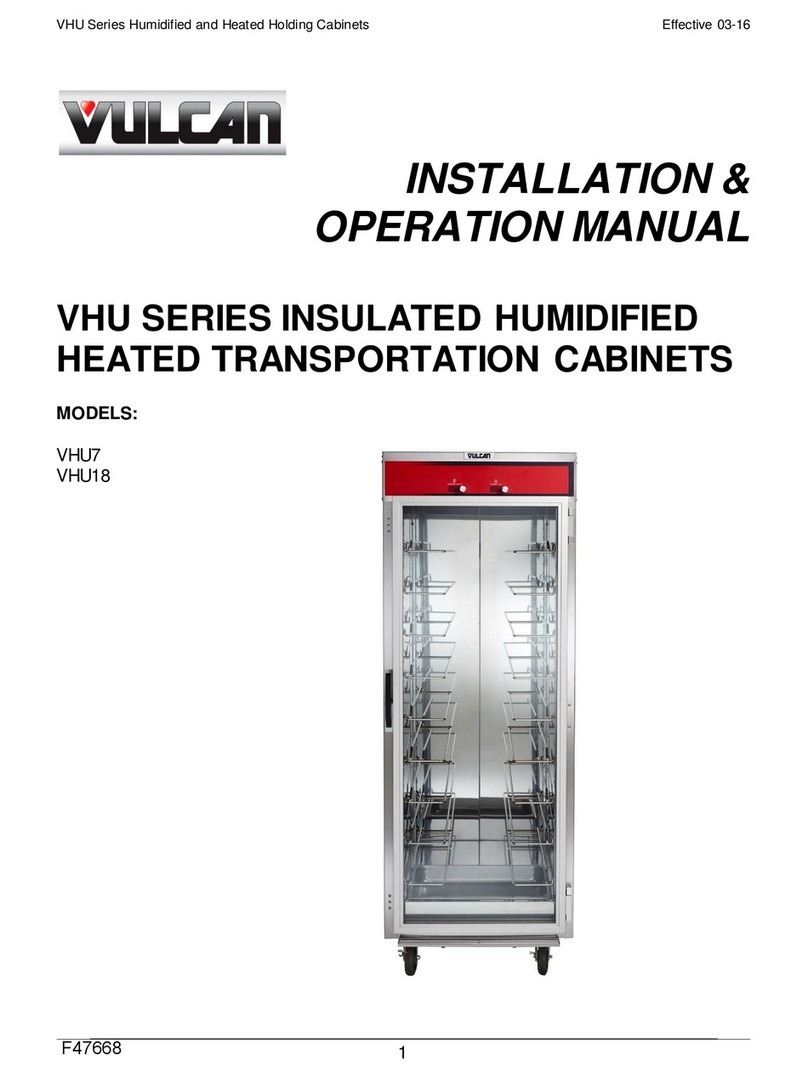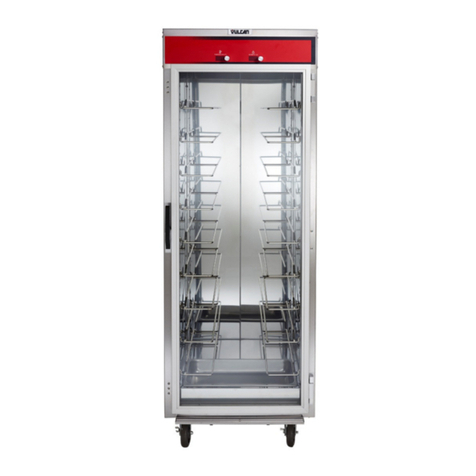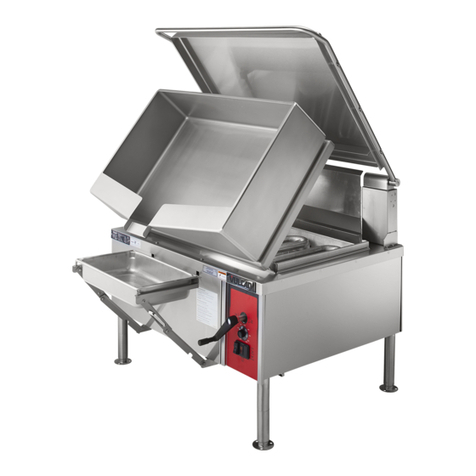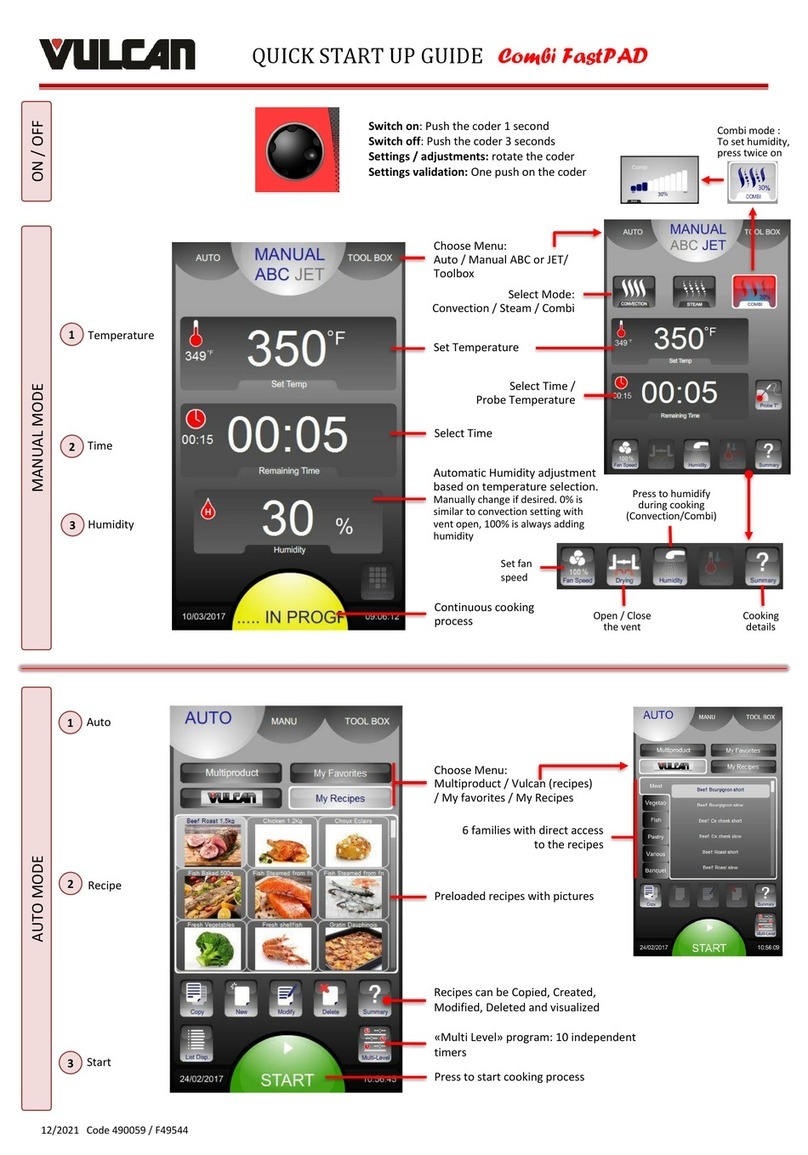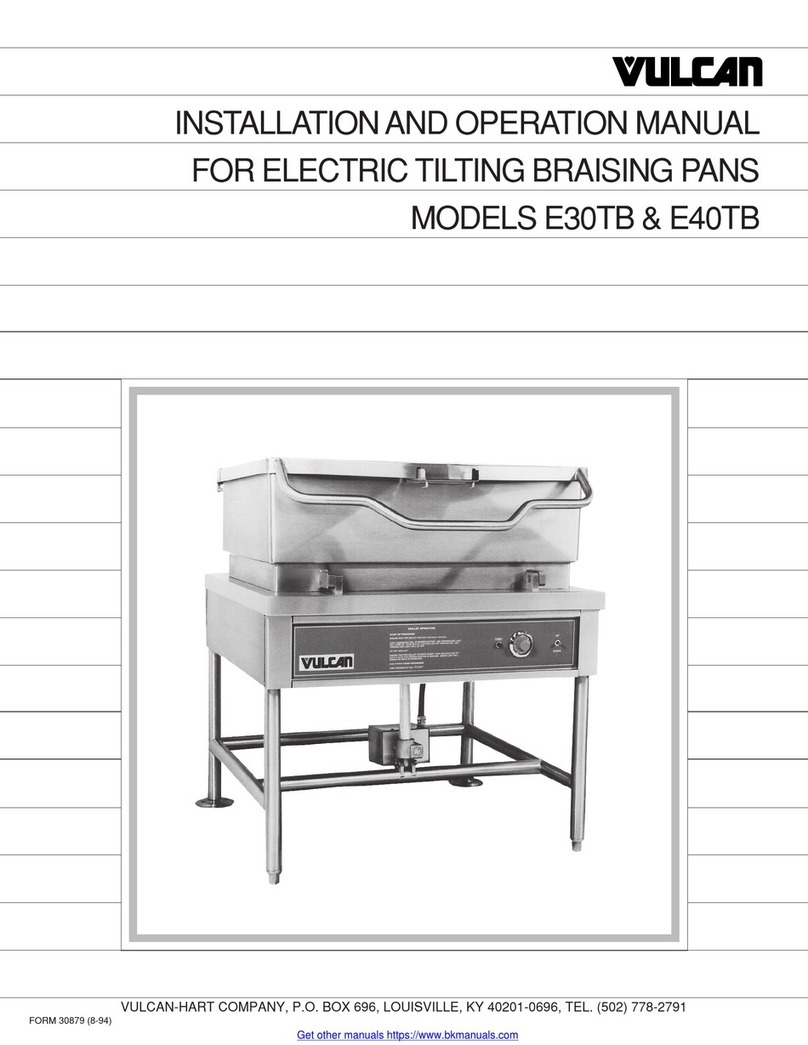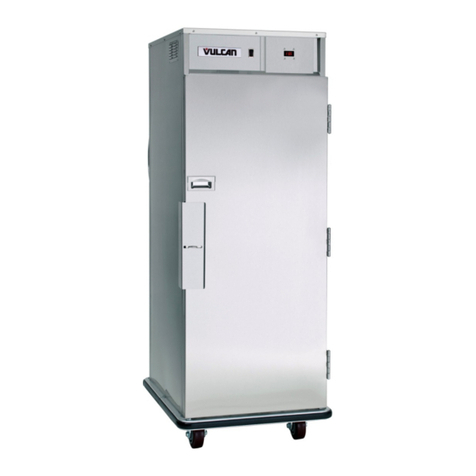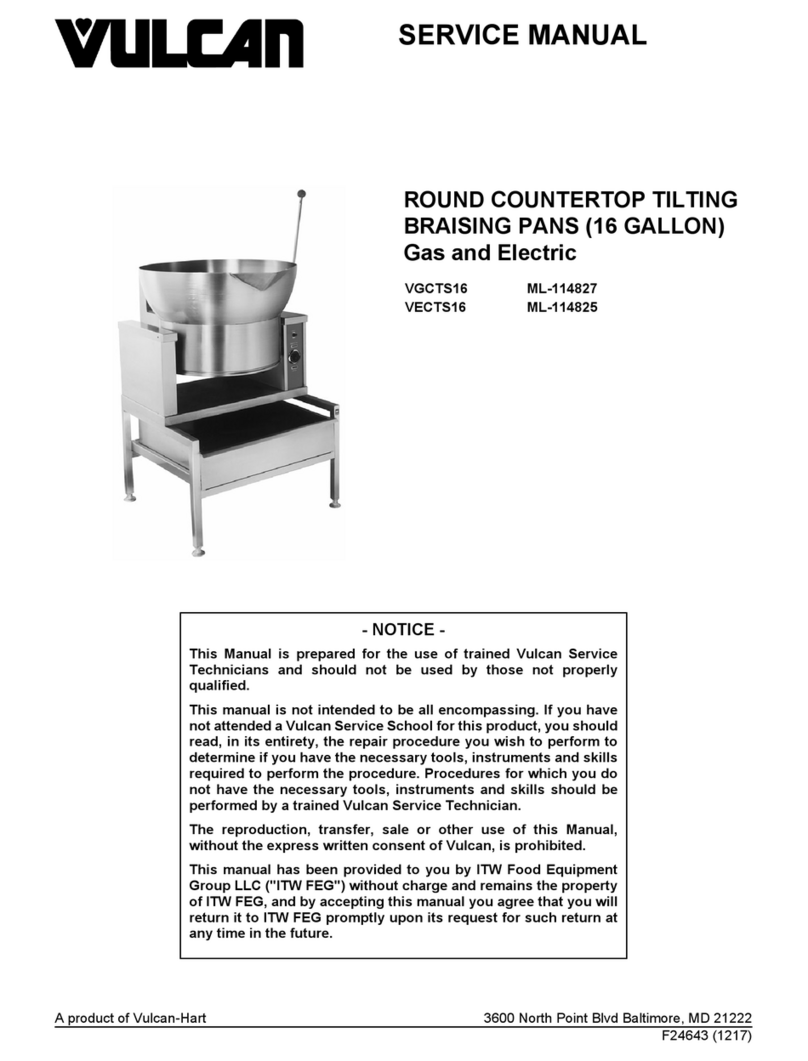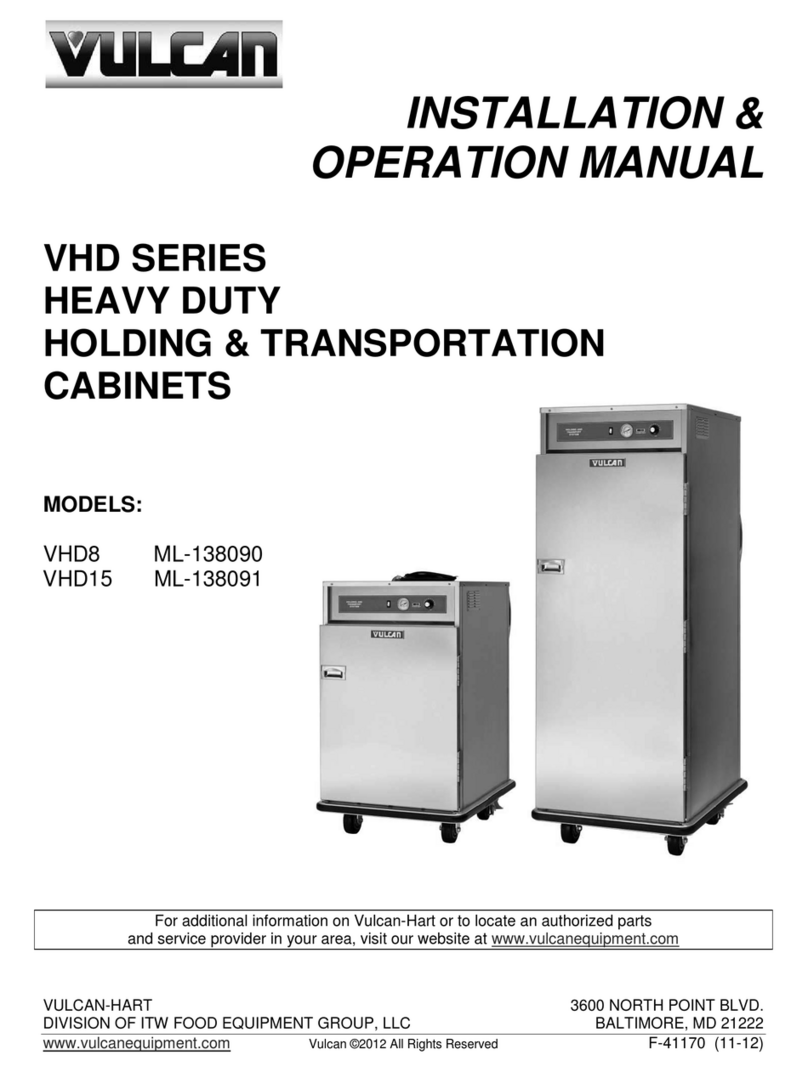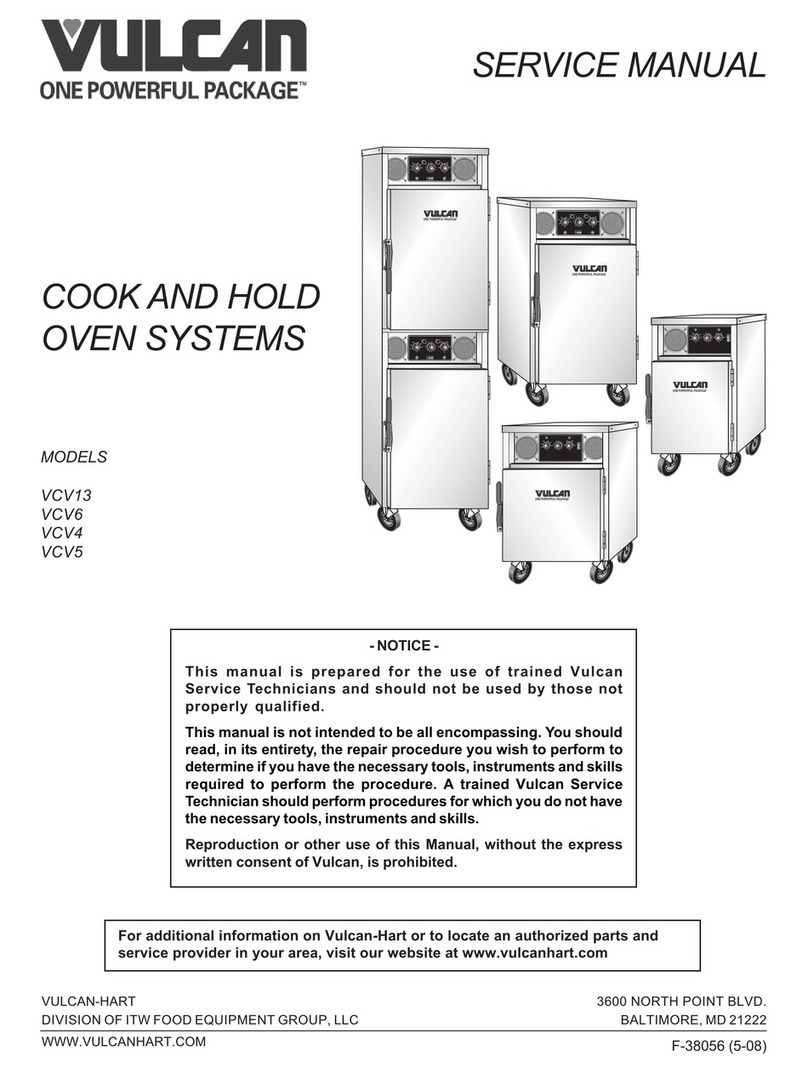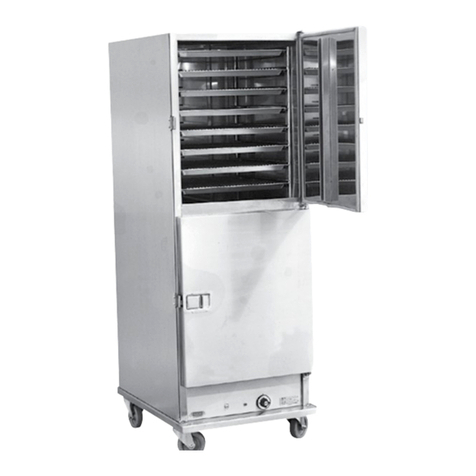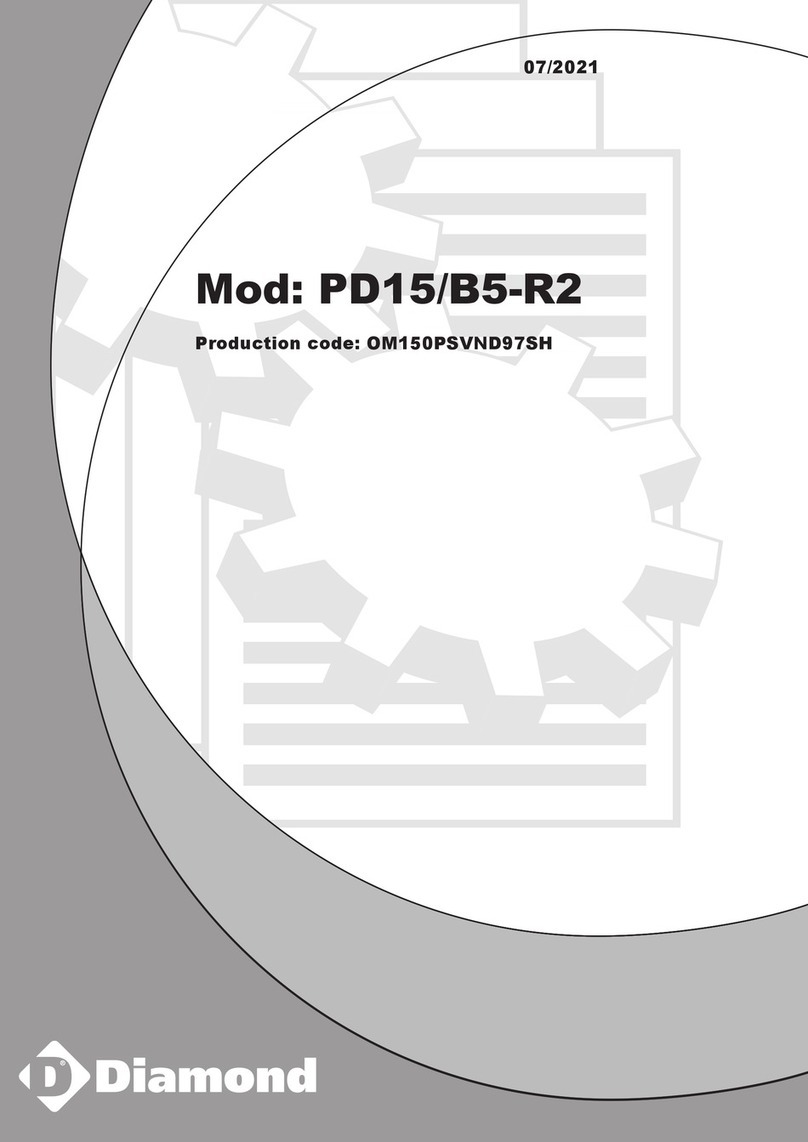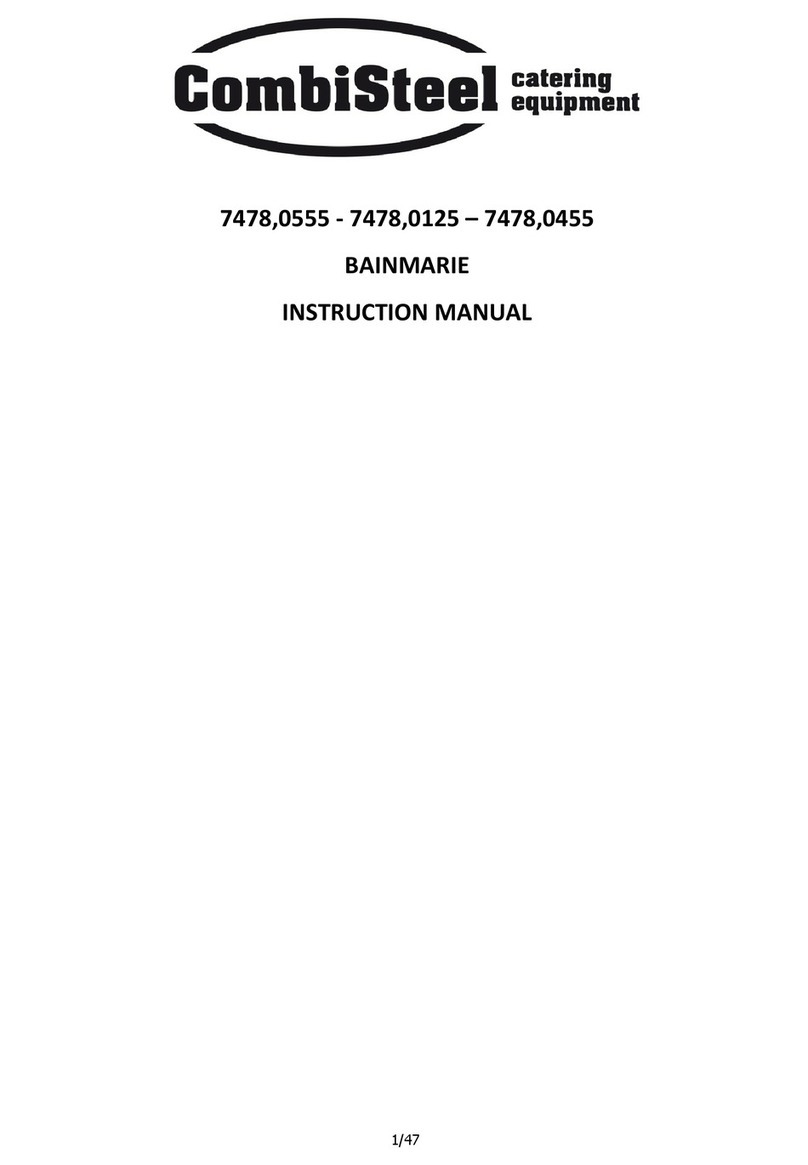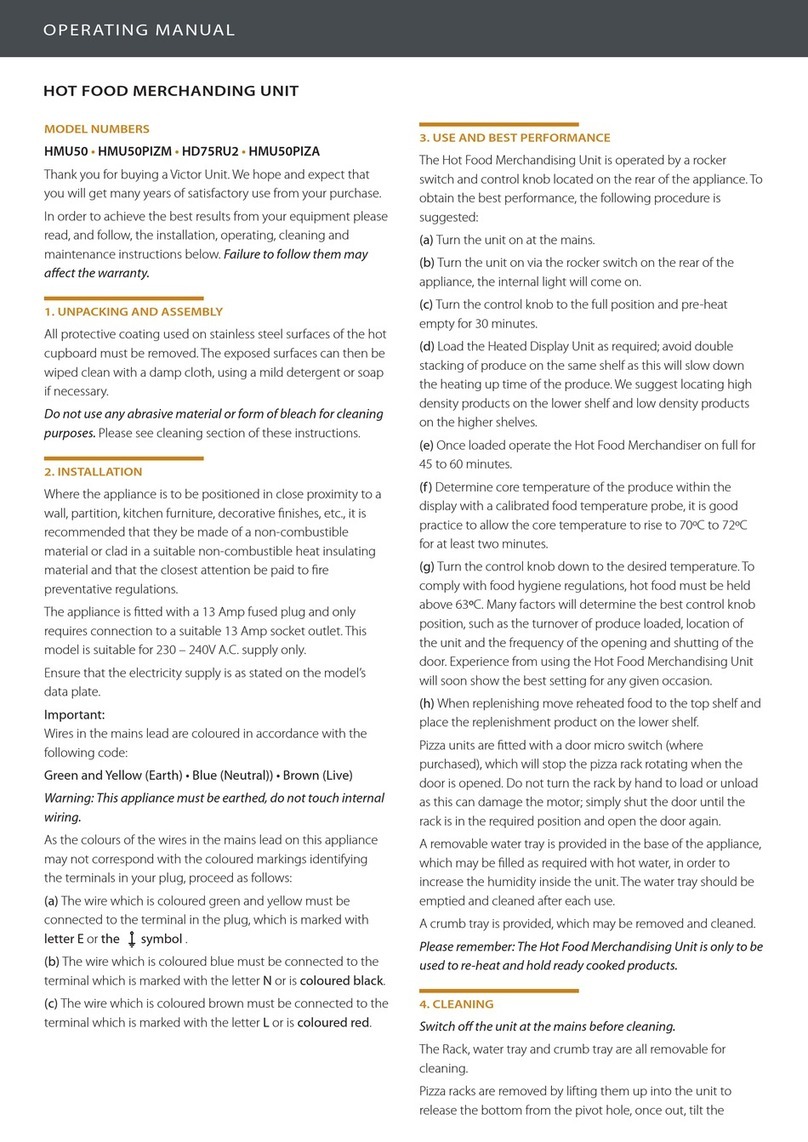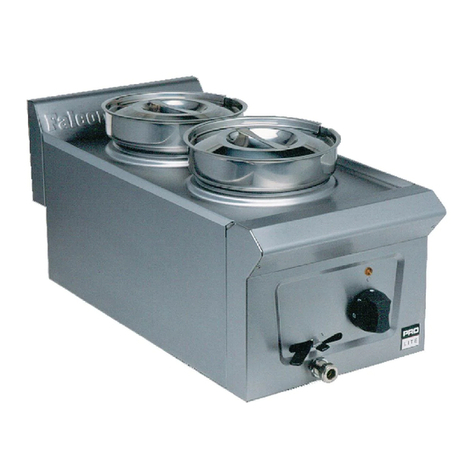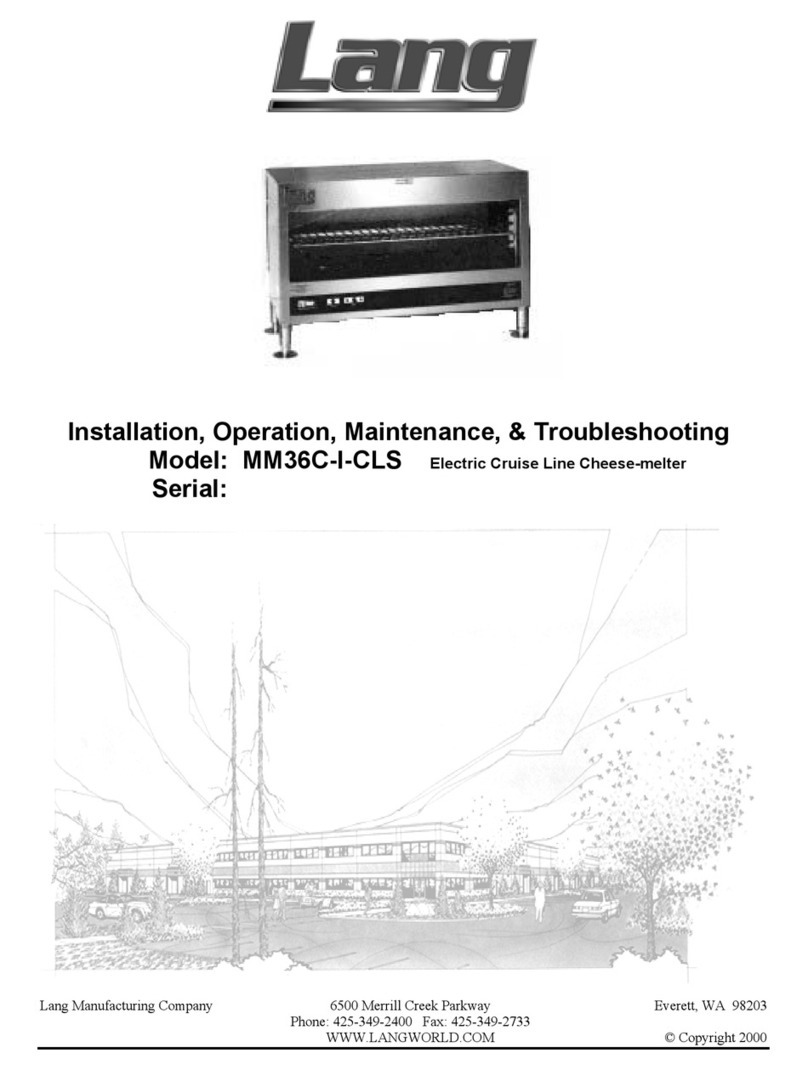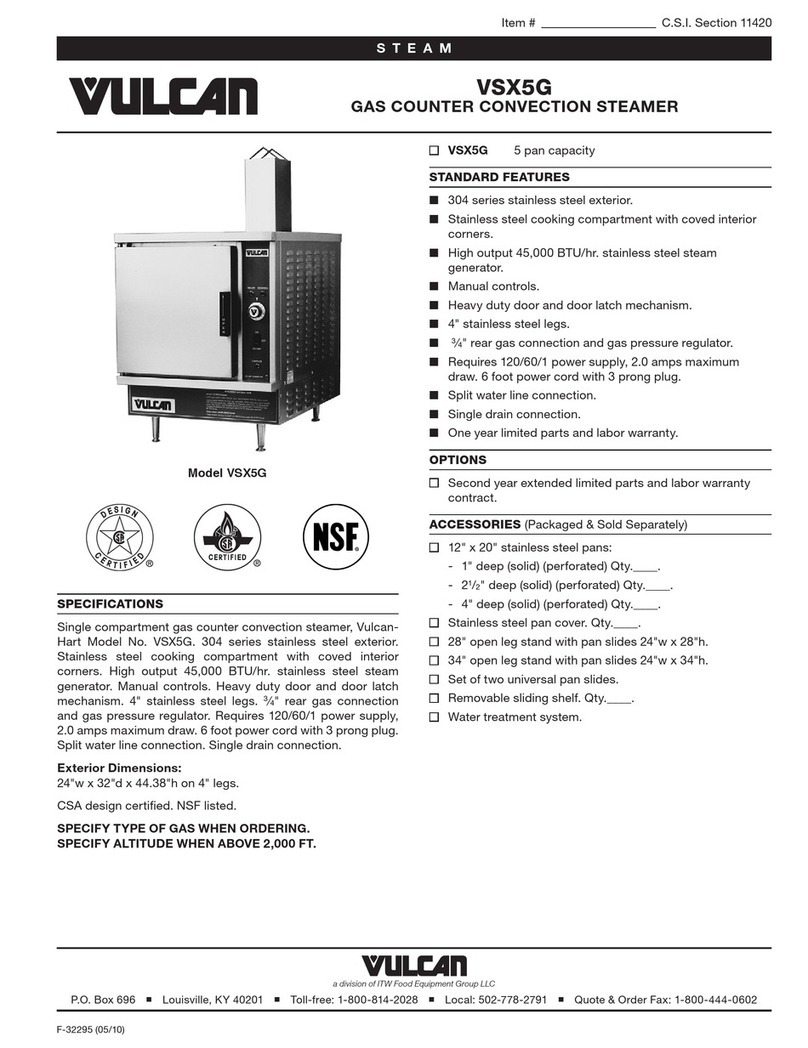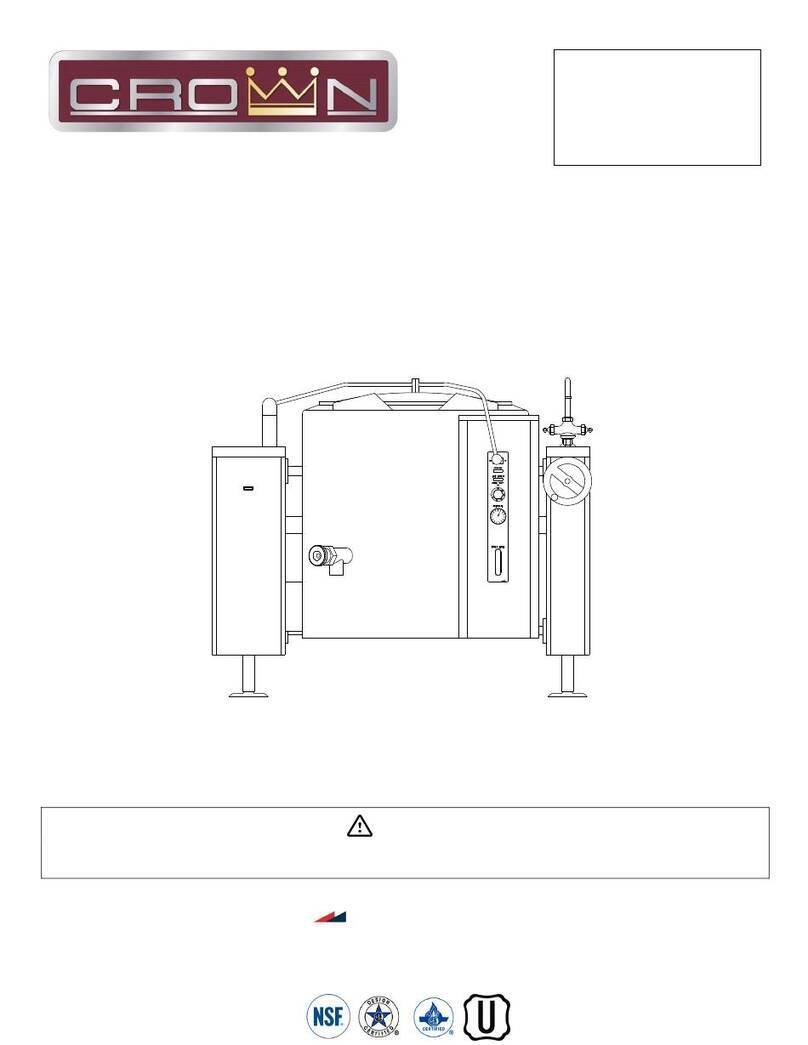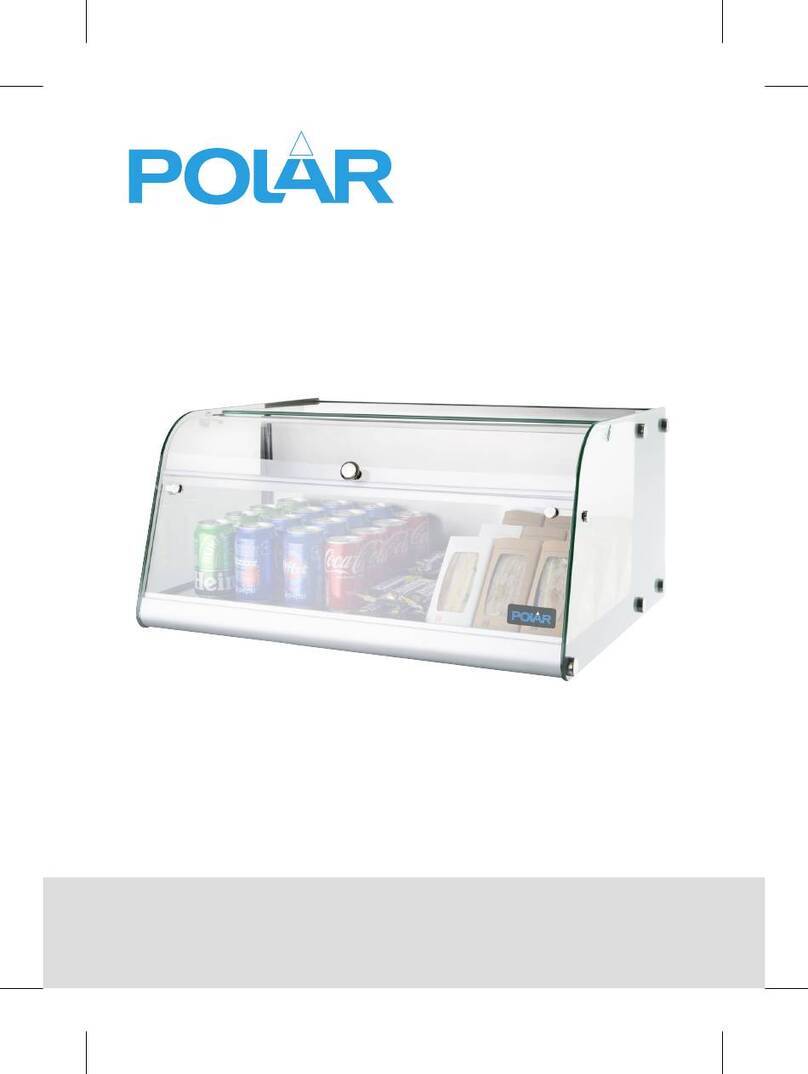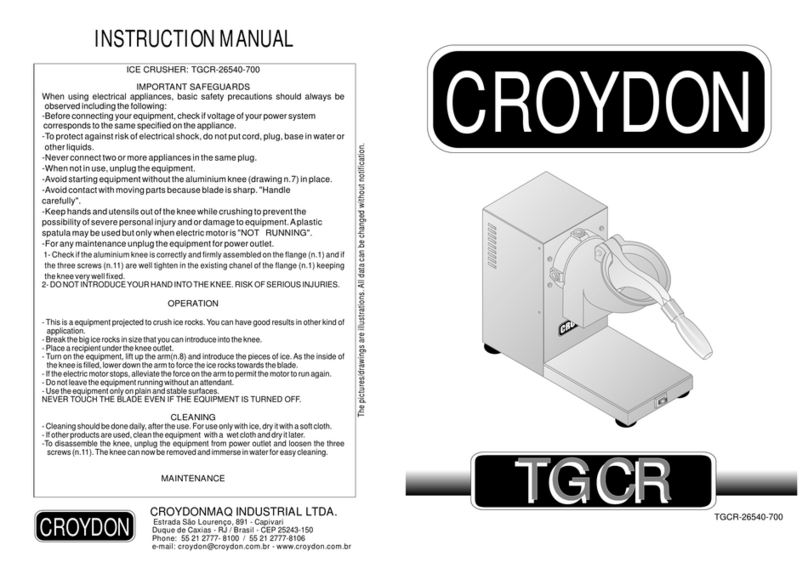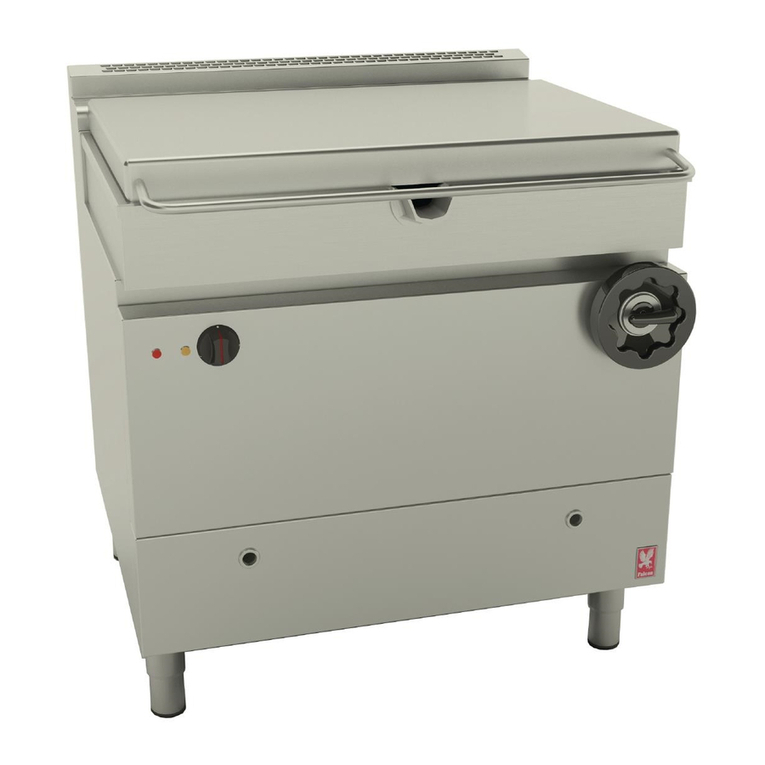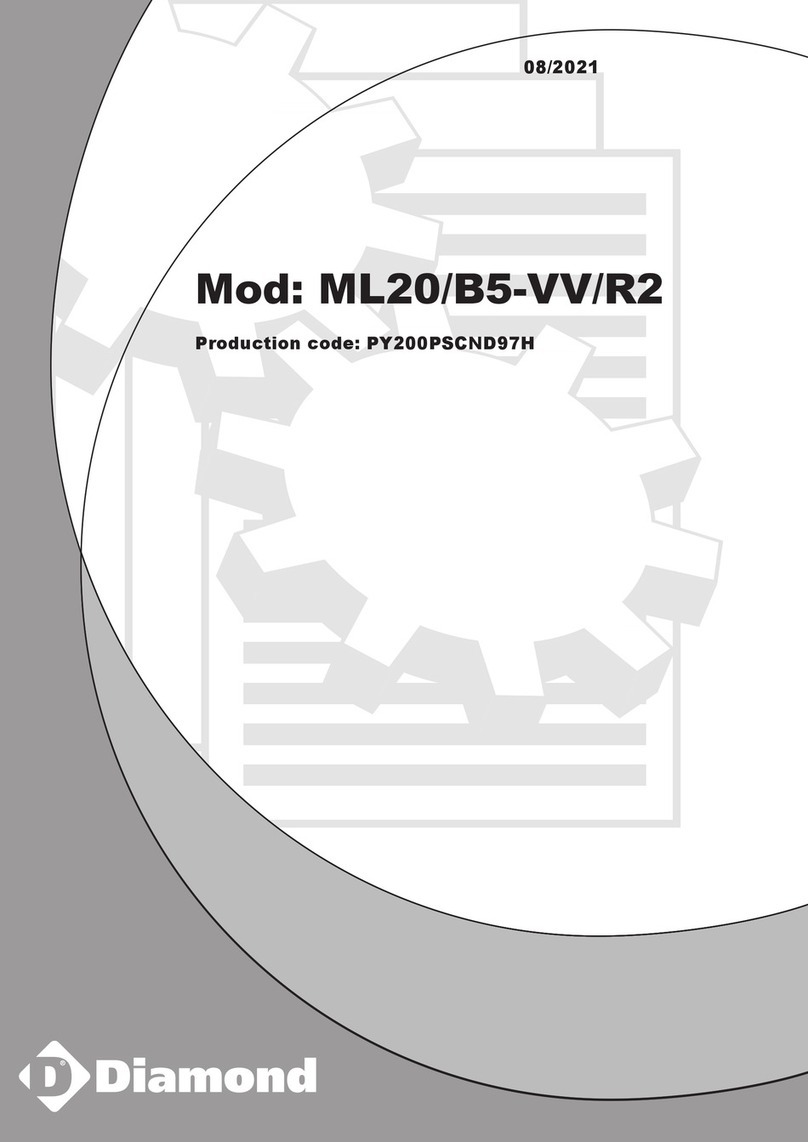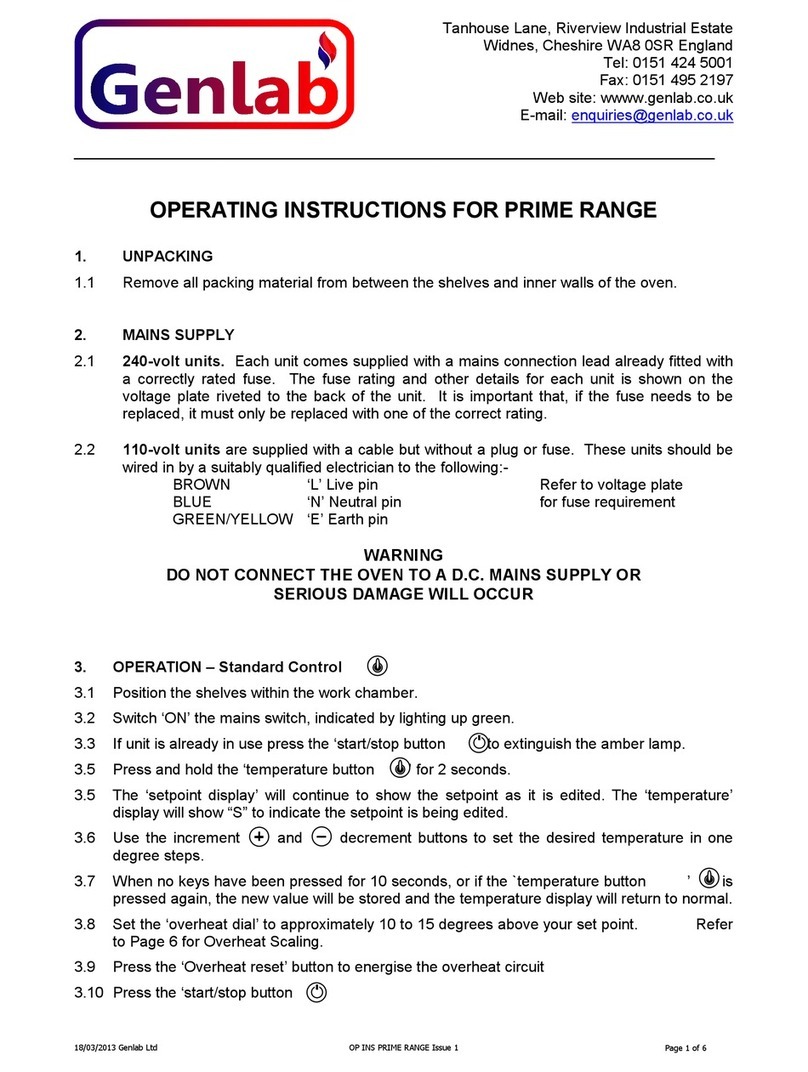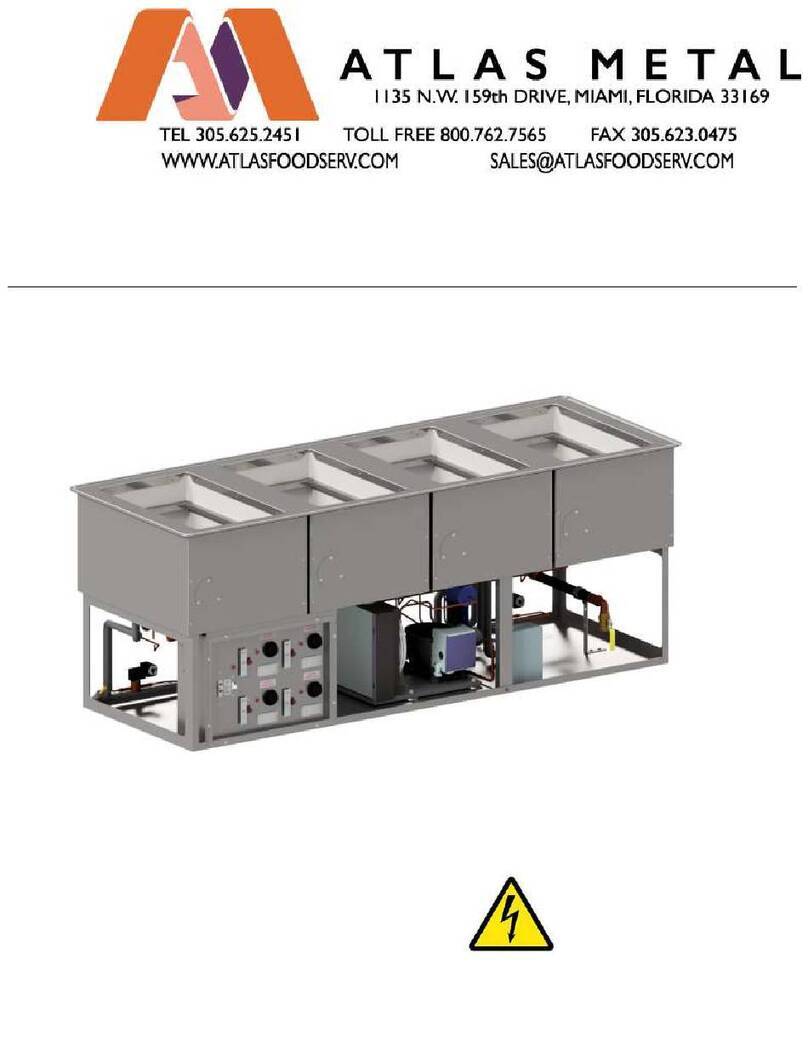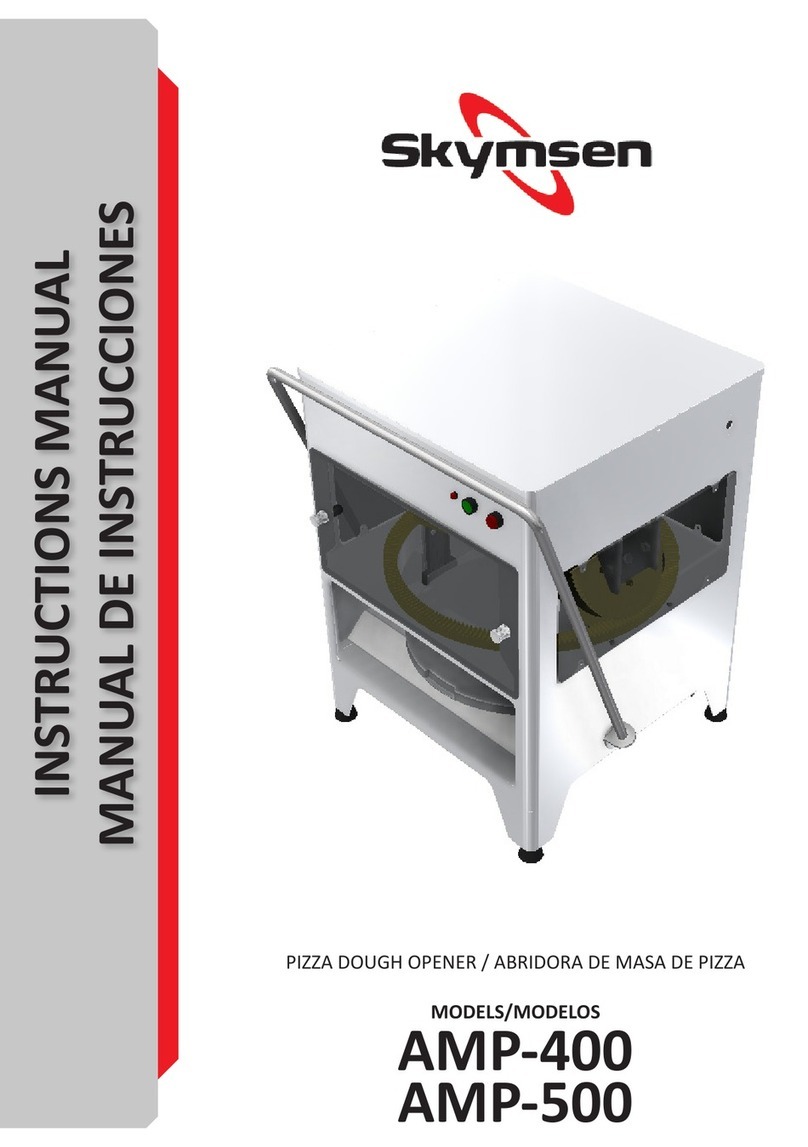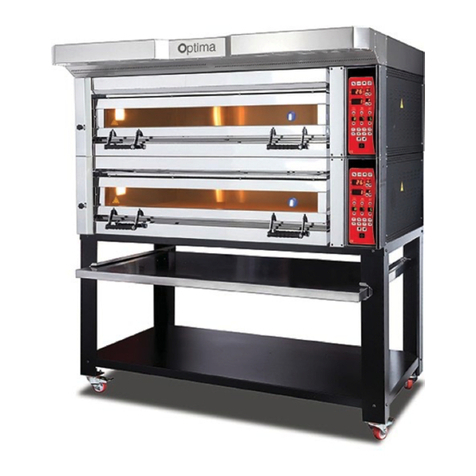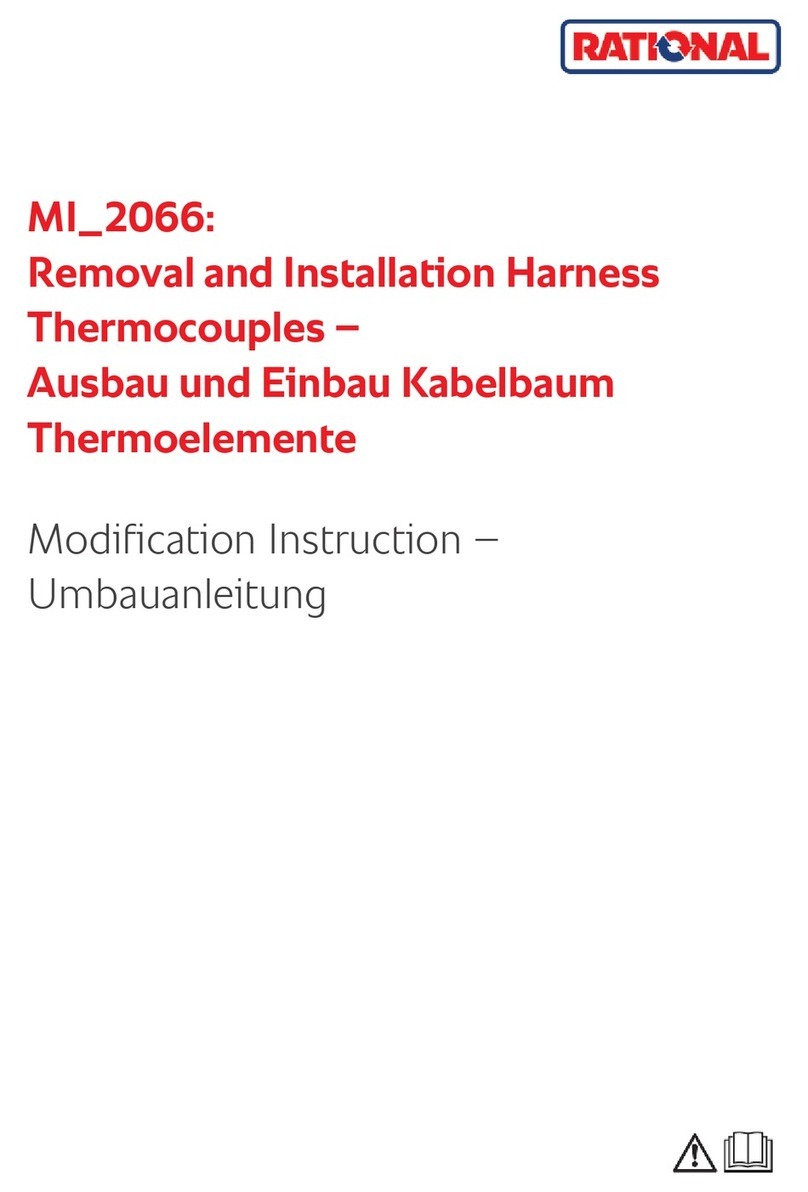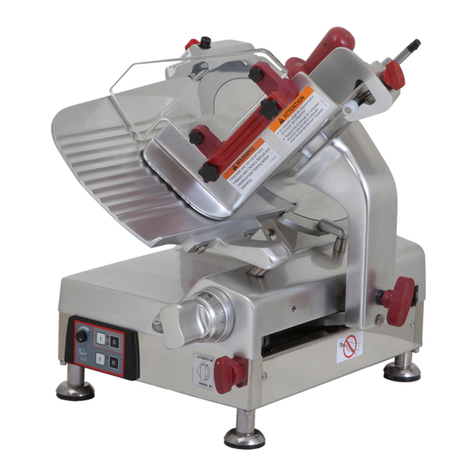
equipped with a compartment pressure
regulating valve. On models without the
compartment pressure regulating valve, the
compartment pressure cycles with the boiler
pressure between 4 and 6 psi.
B. When the timer bell rings to signal the end
of a cook cycle, turn it OFF. Lift the steam
control arm handle to unlatch team control
arm. An internal spring will automatically pull
the arm to the rear. This closes the steam
inlet gate valve and opens the steam
exhaust gate valve, allowing steam and
pressure to exit the compartment.
C. Wait approximately 30 seconds for the
steam to exhaust from the compartment and
to depressurize. Turn the screw handle on
the compartment door counterclockwise
until the gasket no longer seals against the
compartment surface. After the remaining
steam escapes, move the latch paddle to
the left and open the door.
2. Standard
A. Set the timer to the desired cooking time.
The timer must be set past five minutes to
change the state of the timer control micro
switch contacts. If preheating is desired,
allow five to ten minutes (recommended) of
additional time at the beginning of the cook
cycle. The length of time will vary with the
type, size, temperature and condition
(frozen or thawed) of the product and must
be determined from experience.
B. Pull the steam control arm handle forward
and lock it by pulling the handle down. This
closes the steam exhaust gate valve and
opens the steam inlet gate valve, allowing
steam to enter the compartment.
C. Press the compartment power switch to
energize the timer and red light. The
balance of the cooking sequence is
automatic. During preheat, cooler air and
condensate are exhausted from the
compartment through the steam trap
(condenser) until the temperature reaches
180°F, closing the internal bellows.
Throughout the cooking cycle, the
compartment pressure should be 6 psi if
equipped with a compartment pressure
regulating valve. On models without the
compartment pressure regulating valve, the
compartment pressure cycles with the boiler
pressure between 4 and 6 psi.
D. Approximately one minute before timer
reaches zero, the steam control solenoid is
energized to unlatch the steam control arm.
An internal spring will automatically pull the
arm to the rear. This closes the steam inlet
gate valve and opens the steam exhaust
gate valve, allowing steam and pressure to
exit the compartment. When the timer
reaches "0" the red light shuts off and a
buzzer sounds indicating the end of the
cook cycle. Turn the compartment power
switch OFF to silence the buzzer and
remove power from the compartment
controls.
E. Turn the screw handle on the compartment
door counterclockwise until the gasket no
longer seals against the compartment
surface. After the remaining steam escapes,
move the latch paddle to the left and open
the door.
3. Automatic
A. Set the timer to the desired cooking time.
The timer must be set past five minutes to
change the state of the timer control micro
switch contacts.
B. Pull the steam control arm handle forward
and lock it by pulling the handle down. This
closes the steam exhaust gate valve and
opens the steam inlet gate valve, allowing
steam to enter the compartment.
C. Press the compartment power switch to
supply power to the compartment controls.
The automatic compartment controls
feature load compensated cooking time by
utilizing a thermal switch. With this feature,
when the compartment temperature
reaches 180°F (the temperature at which
preheating or defrosting is complete) the red
light will then come on and the timer will
start. For a small food load, the delay time
before the timer starts might be a minute or
less. For a large food load, the delay time
could be four to five minutes. During
preheat, cooler air and condensate are
exhausted from the compartment through
the steam trap (condenser) until the
temperature reaches 180°F, closing the
internal bellows. Throughout the cooking
cycle, the compartment pressure should be
6 psi if equipped with a compartment
VL BOILER BASE SERIES CONVECTION STEAMERS - GENERAL
F24650 Rev. A (1017) Page 10 of 93




















